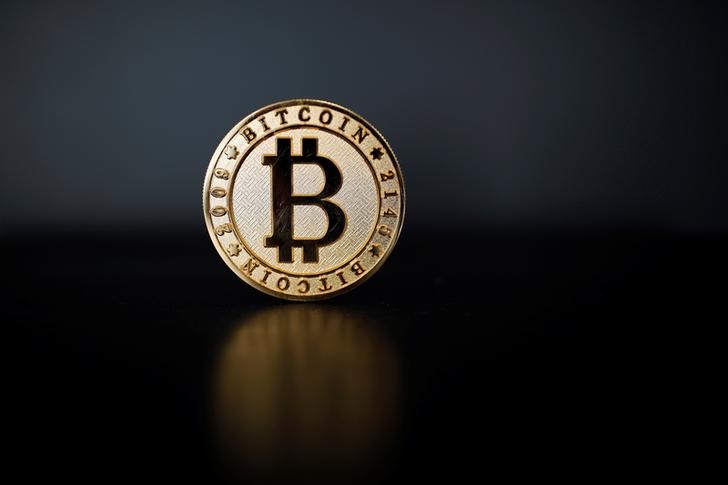Investing.com -- The monthly average network hashrate for Bitcoin declined sequentially for the first time since December 2022, as mining economics remain pressured for inefficient and older ASICs post-halving, according to a report by JPMorgan (NYSE:JPM).
Daily mining revenue is more than 50% below pre-halving levels, which is expected to temper hashrate growth in the near term.
Despite these challenges, May was a positive month for U.S.-listed mining stocks. JPMorgan's report highlights that companies reported record first-quarter 2024 revenue and adjusted EBITDA, even excluding mark-to-market gains on HODL balances, and increased their share of the network hashrate. The aggregate market cap of the 14 U.S.-listed miners tracked by JPMorgan increased by 19% sequentially to $18.4 billion, led by a nearly 80% rally in shares of Iris Energy .
The average Bitcoin price in May was roughly $65,200, down less than 1% from April, with a seven-day rolling average exiting the month at around $68,400, up 8% from April's figure. According to JPMorgan's calculations, Bitcoin’s annualized volatility was 51% in May, consistent with the previous month’s 54%.
The network hashrate, a proxy for industry competition, declined sequentially for the first time since December 2022 as inefficient and older operators exited the network post-halving. The average network hashrate was 599 EH/s in May, down 26 EH/s (4%) from April, and 50 EH/s from pre-halving levels. The month-end seven-day moving average network hashrate stood at 595 EH/s, down 5% from the end of April, though up 58% year-over-year. Mining difficulty also declined by 4% from the end of April.
Bitcoin mining profitability hovered at record lows in May. Bitcoin miners earned an average of $49,000 per EH/s in daily block reward revenue, the lowest level on record. For context, this metric peaked at $342,000 in November 2021 when Bitcoin’s price was $60,000 and the network hashrate was 161 EH/s. It was around $100,000 leading into the halving. Transaction fees fluctuated between 3% and 10% of the block reward in May, spiking as high as over 100%, up modestly from 2% to 3% in April.
The proved (remaining) block reward and the four-year block reward revenue opportunity were $87.9 billion and $43.8 billion, respectively, as of May 31, both up 9% from April 30. The aggregate market cap of the 14 U.S.-listed miners was 21% and 42% of the nominal value of the proved and four-year block reward opportunity, respectively, up modestly sequentially and ahead of historical averages of 16% and 33%, respectively.
The group of 14 U.S.-listed Bitcoin miners tracked by JPMorgan had an aggregate market cap of $18.4 billion as of May 31, up 19% for the month. The best- and worst-performing stocks for the month were Iris Energy Ltd (NASDAQ:IREN), up 79% and Stronghold Digital Mining Inc (NASDAQ:SDIG), down 11%, respectively.
